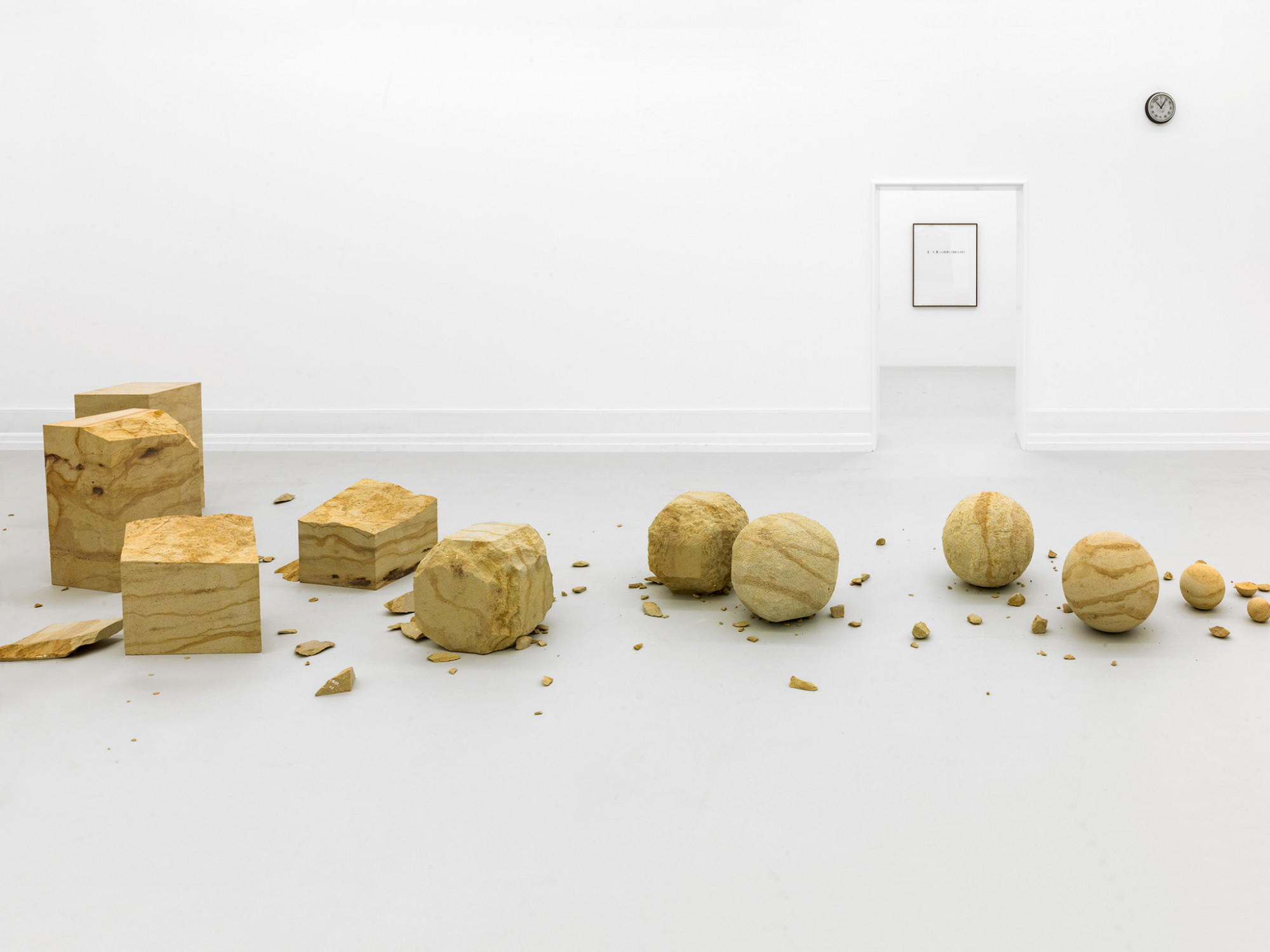
Die Menge des Moments, 2015
sandstone
dimensions variable
unique
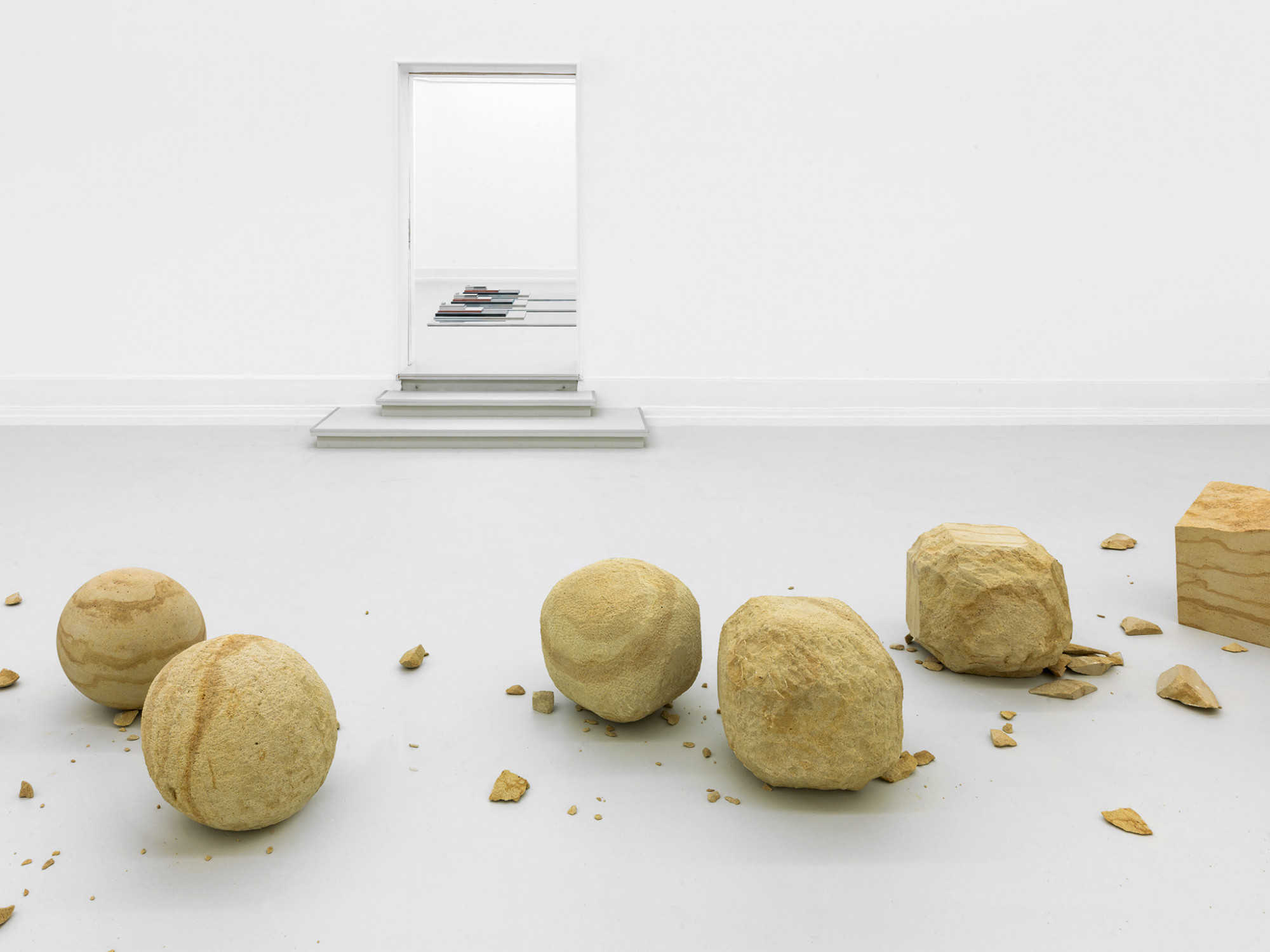
Die Menge des Moments, 2015
sandstone
dimensions variable
unique
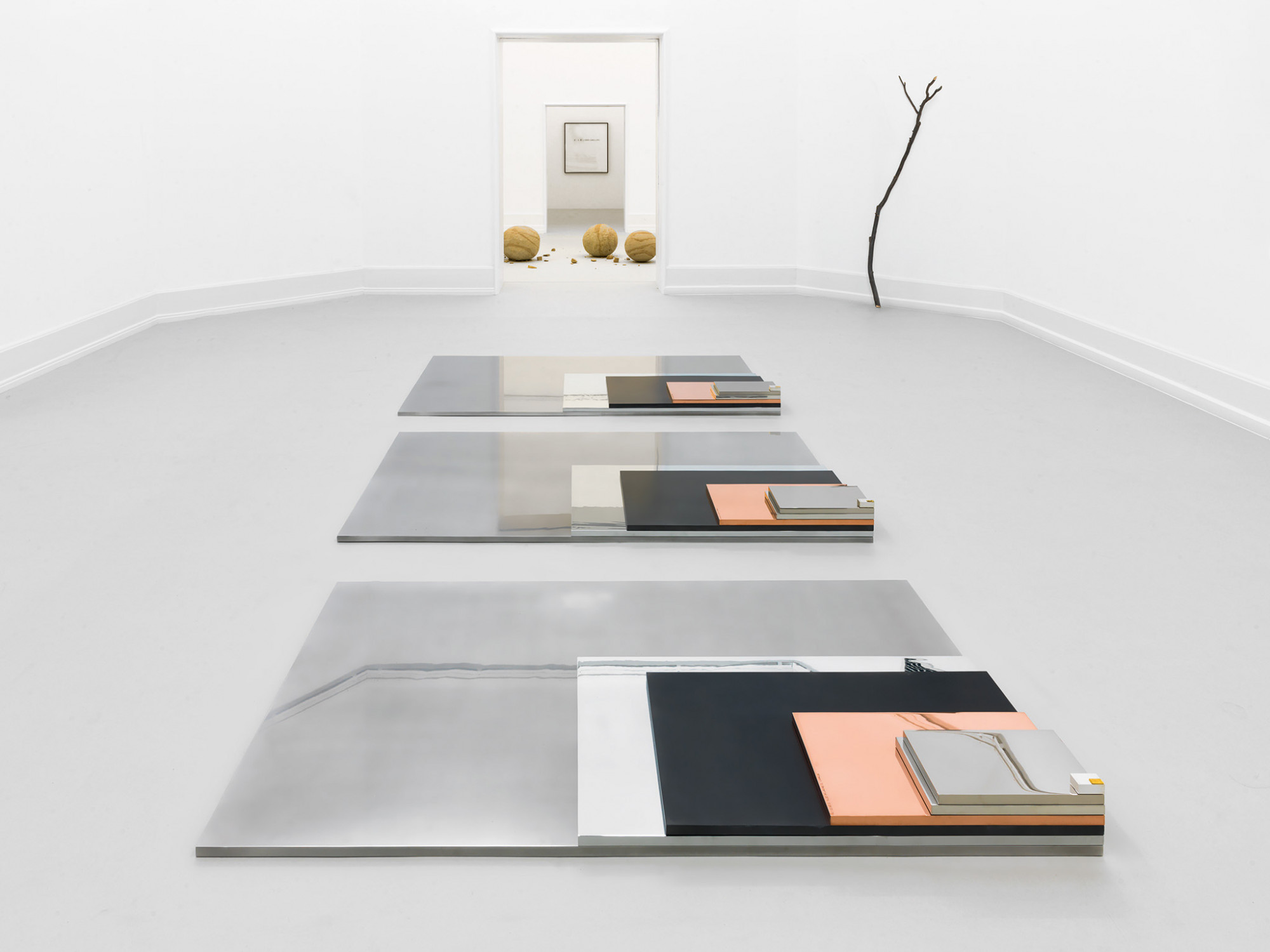
from front to back:
Dienstag, 13. Mai 2014, 17:17:00 Uhr, 2014
aluminium, zinc, lead, copper, nickel, tin, silver, gold, 14.2 x 186.5 x 115.2 cm
Mittwoch, 10. September 2014, 10:28:03 Uhr, 2014
aluminium, zinc, lead, copper, nickel, tin, silver, gold, 14.2 x 171.5 x 106 cm
Montag, 14. Juli 2014, 12:15:44 Uhr, 2014
aluminium, zinc, lead, copper, nickel, tin, silver, gold, 14.2 x 180 x 111 cm
In this series, the size of each element is determined by the market value of each metal, starting with gold, of the specific time indicated in the title. Taking the questions of values and the weight of collective decisions as fundamental markers of our perception of the world, the artist has produced a construction – a sort of abstract monument – out of the eight most important metals on the raw materials markets, be they industrial (nickel, iron, copper, lead, zinc and aluminium) or benchmark precious metals (gold and silver).
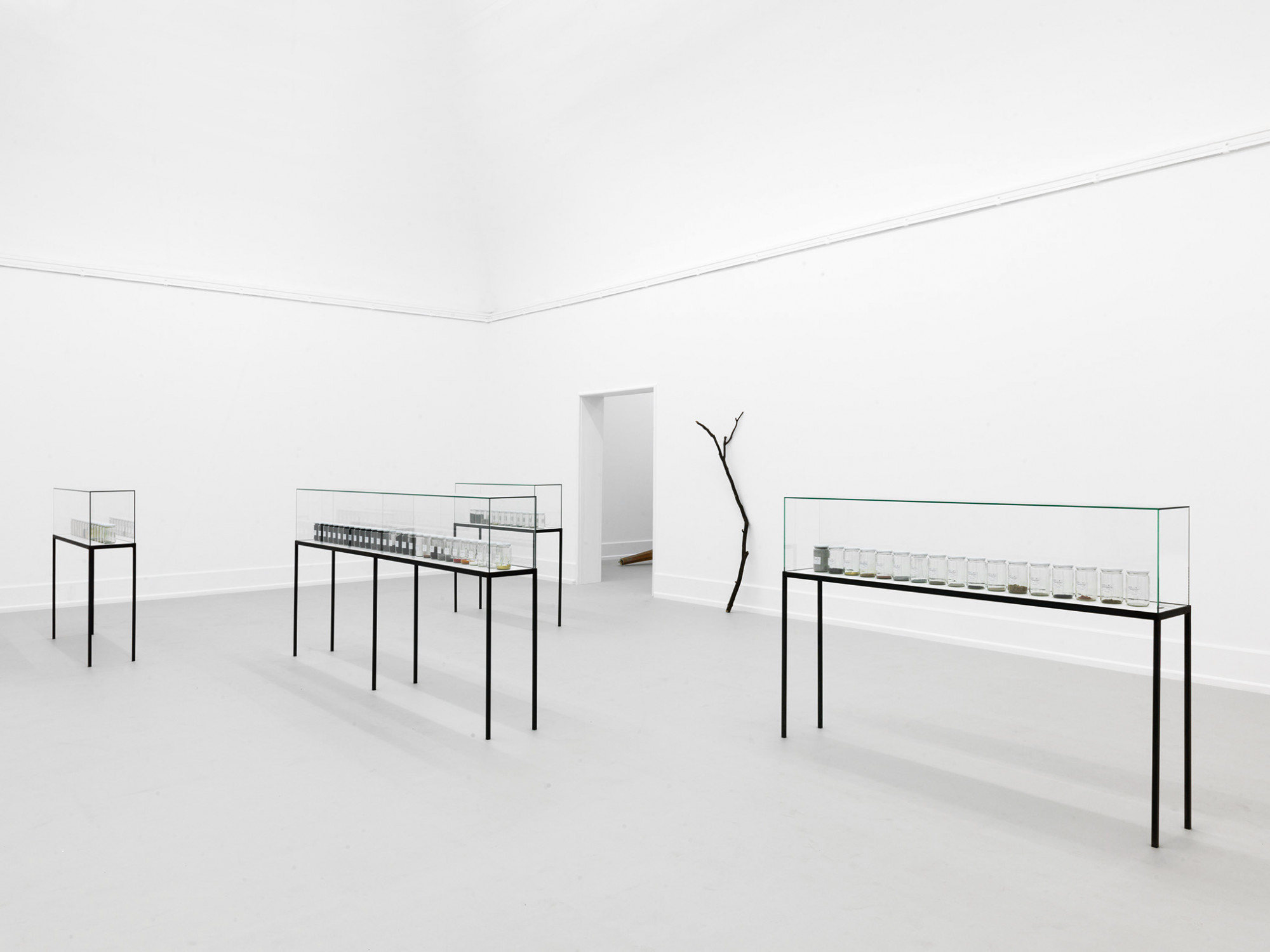
Installation View
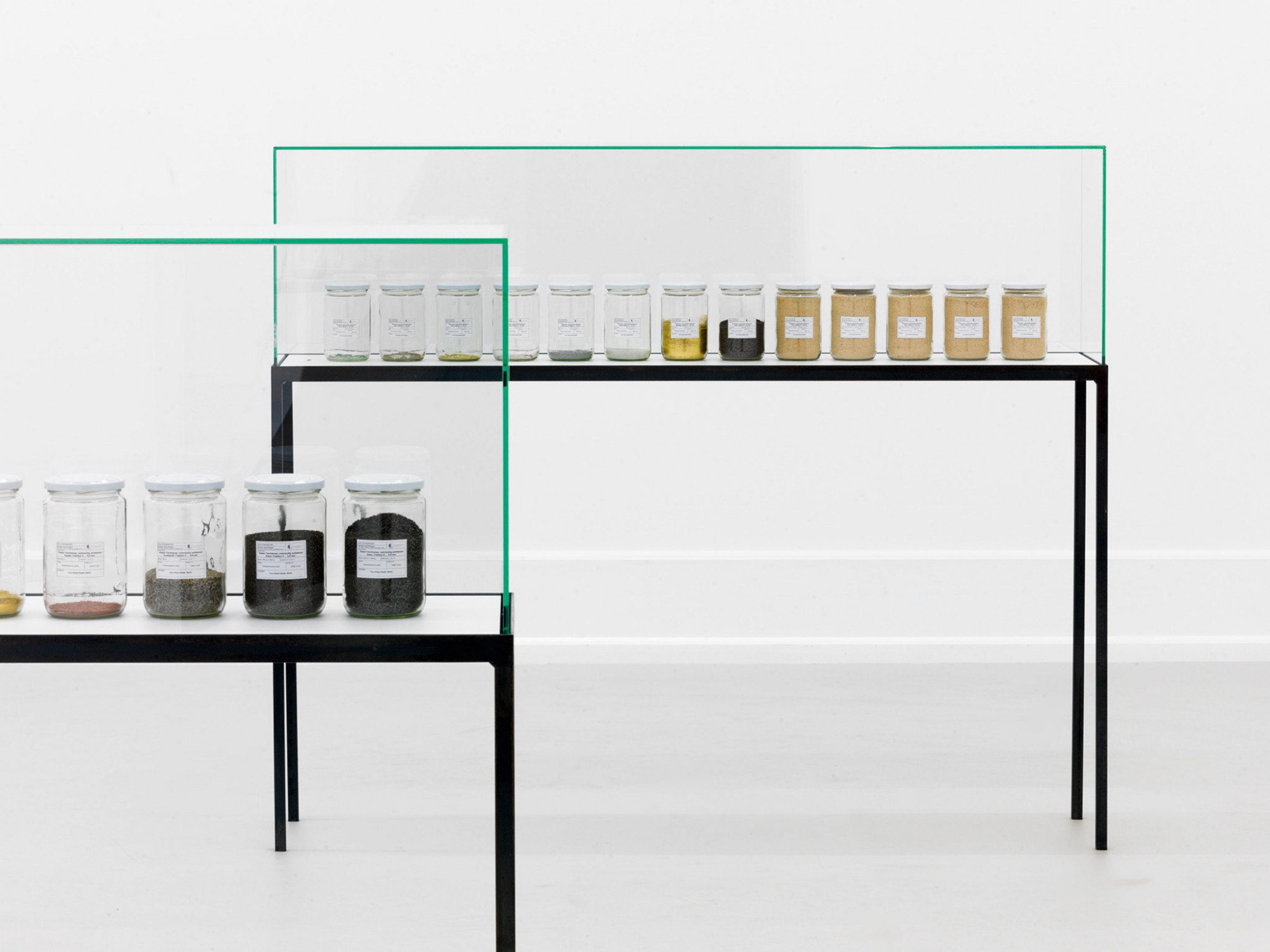
Kaminuhr (Zentra), 2014
wood 1148.7g, steel 903.7g, brass 555.7g, glass 110.0g, aluminium 21.2g, copper 0.9g, vanish 0.8g, leather 0.5g, felt 0.05g, 13 jars, vitrine
132 x 154.9 x 32.4 cm
unique
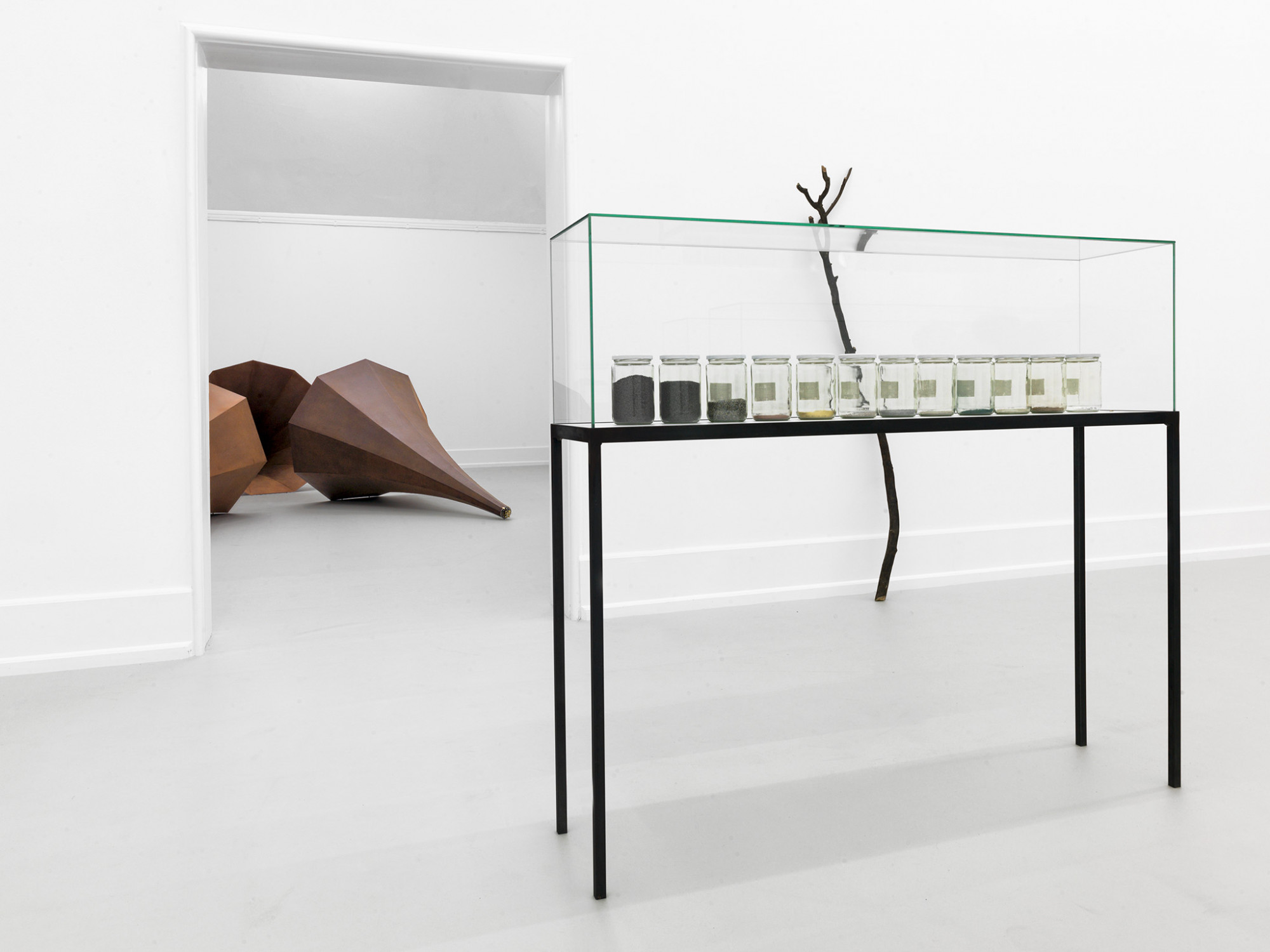
Lampe (Kaiser-Idell), 2014
iron 1991.4g, plastic 149.1g, copper 58.7g, brass 30.6g, glass 29g, aluminium 20.9g, ceramic 16.7g, varnish 8,5g, paper 1.9g, Wolfram 0.05g, 12 jars, vitrine
132 x 144.5 x 32.4 cm
In a display case, labelled glass jars with pulverized contents are presented. In this series, Kwade had different objects - a bicycle, a radio, a lamp or a clock - separated into component parts and then professionally pulverized in a lengthy process. The ground components with a particle size of 0.5 mm, the size of a grain of sand, were poured into the various glass jars. Precise specifications of the weight and contents of the itemized materials trace the industrial product back to its original materiality. With this installation, Kwade presents an image of a ‘decomposing material world.’
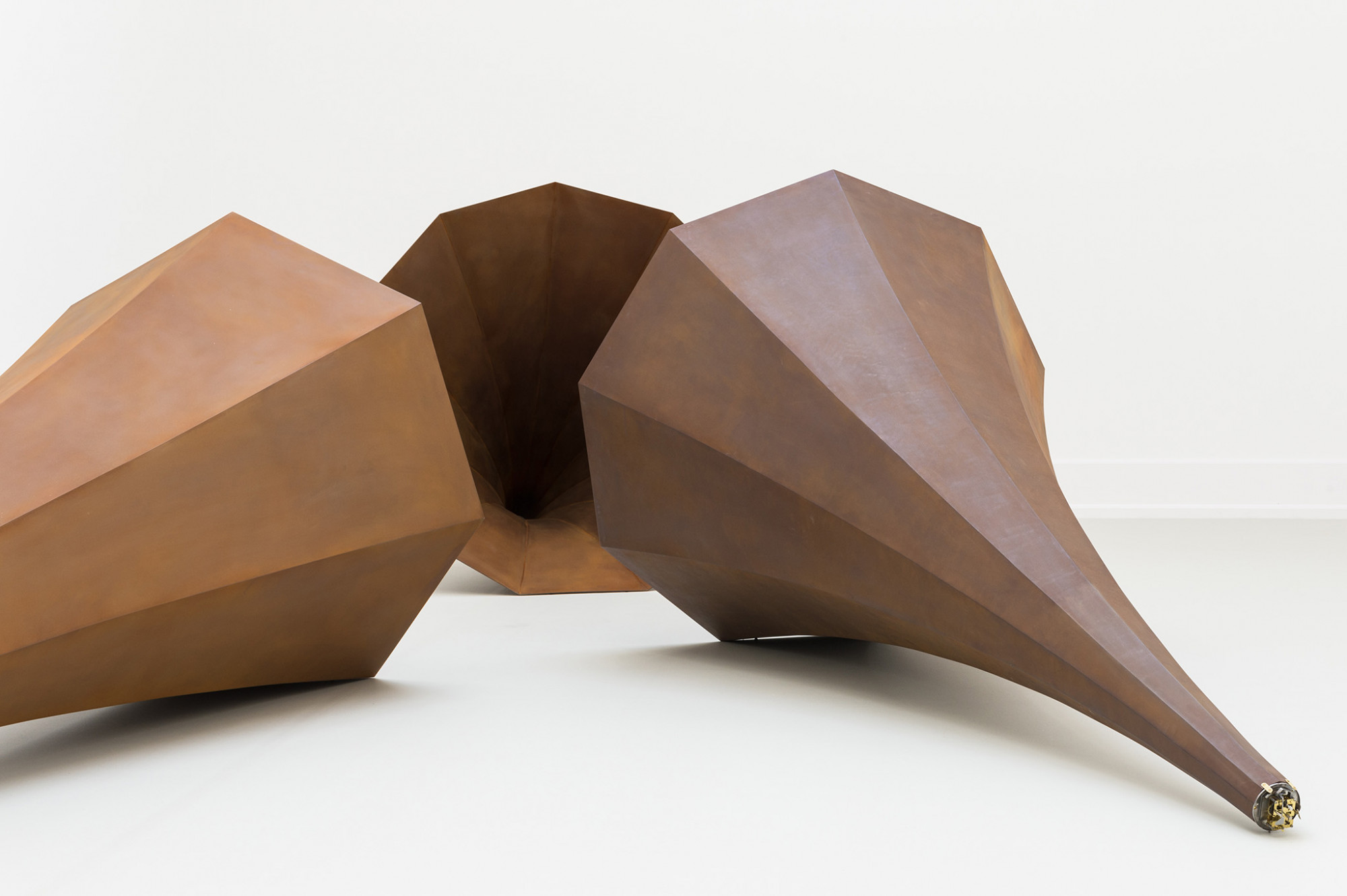
Der Tag ohne Gestern I-III, 2014-2015
corten steel, alarm clock, unique
Der Tag ohne Gestern: 145 x 300 x 145 cm
Der zweite Tag ohne Gestern: 133 x 350 x 133 cm
Der Tag ohne Gestern: 157 x 174 x 157 cm
Alicja Kwade has long been engaged with structures that attempt to define reality: value systems, social agreements and the perception of space and time. Here, she questions some of our most innate perceptual notions with three large steel structures whose forms are inspired by pre-scientific attempts to illustrate the inherent structure of the universe. While referencing these early schematics, Kwade’s sculptures also bring to mind the horn-shaped loudspeakers of early gramophones, a fact she exploits by utilizing their intrinsic ability to amplify sound. A clock is affixed to the base of each sculpture, its ticking seconds acoustically stretched and strengthened by the funnel-shaped tubes. The viewer can walk through the space, peer down the barrel of the sculptures and find a clock indicating the accurate time, demonstrating one of the fixed measures humans use to place ourselves in the universe. One of our most fundamental experiences – the constant passage of time – is in dialog with the sculptures themselves, whose forms are based on unprovable, intangible systems.
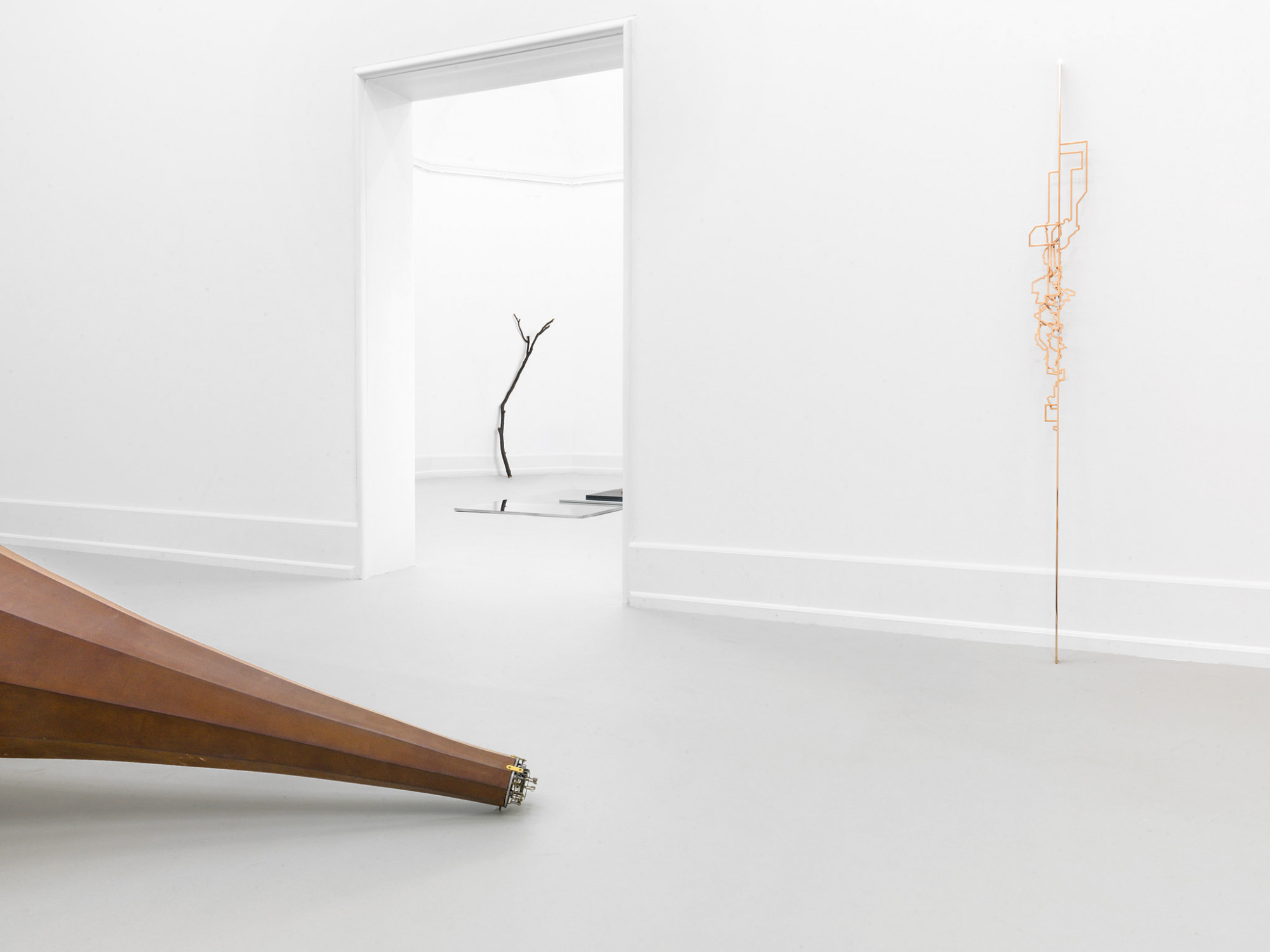
Installation View
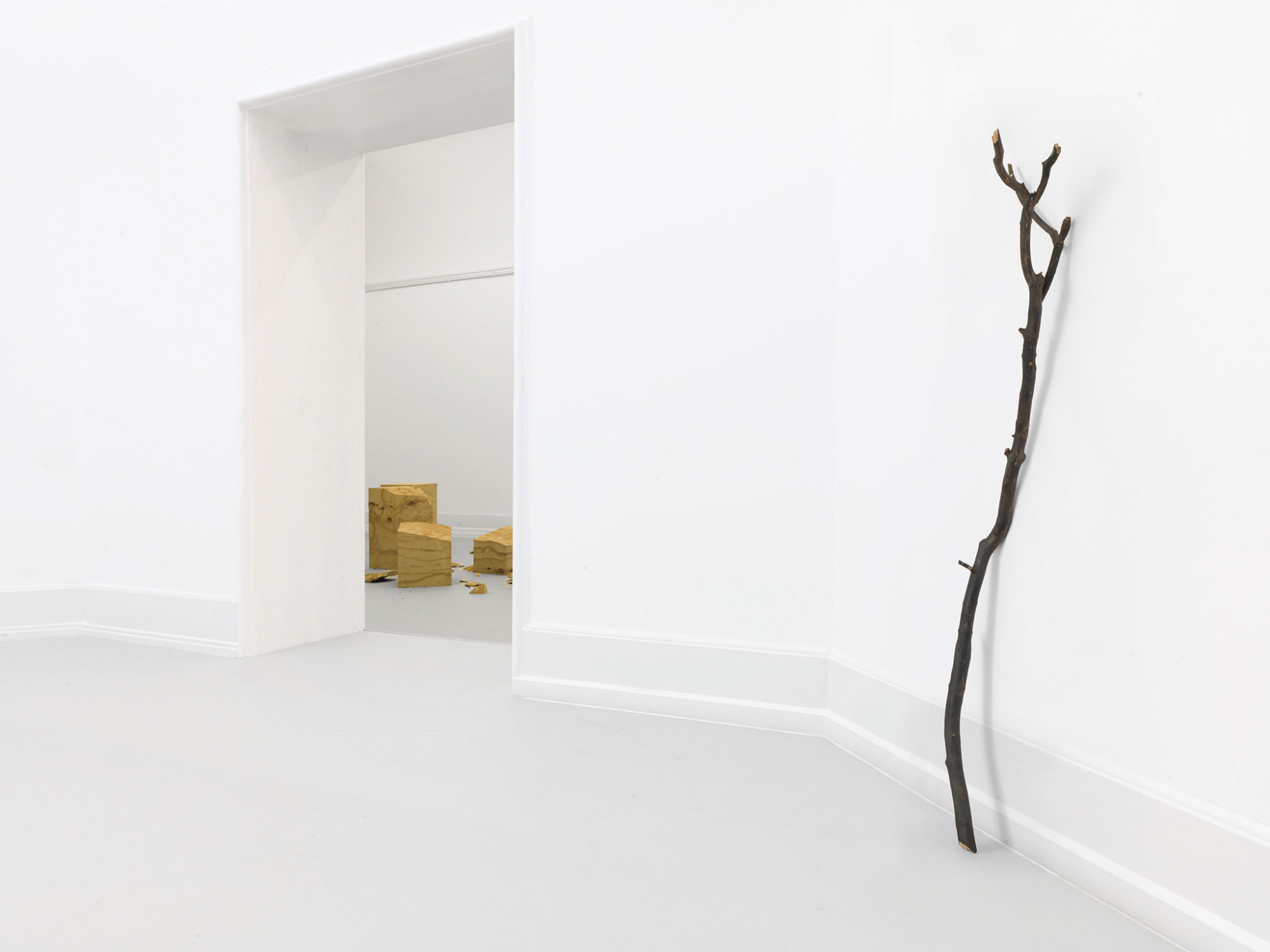
Ast/AntiAst 3, 2014
wood, 2 parts
each 300 x 100 x 50 cm; 118 x 39 1/3 x 19 2/3 in
In Parallelwelt (Ast/Antiast), a rubber faux-branch stands beside its authentic twin. Kwade restlessly plays with form and illusion: her work is about what is real, what is unreal; what you think of a piece; what material, what consistency may be possible beyond that. The branches are ever shown side-by-side, their distance making direct comparison impossible and making you wonder if you are experiencing déjà-vu.
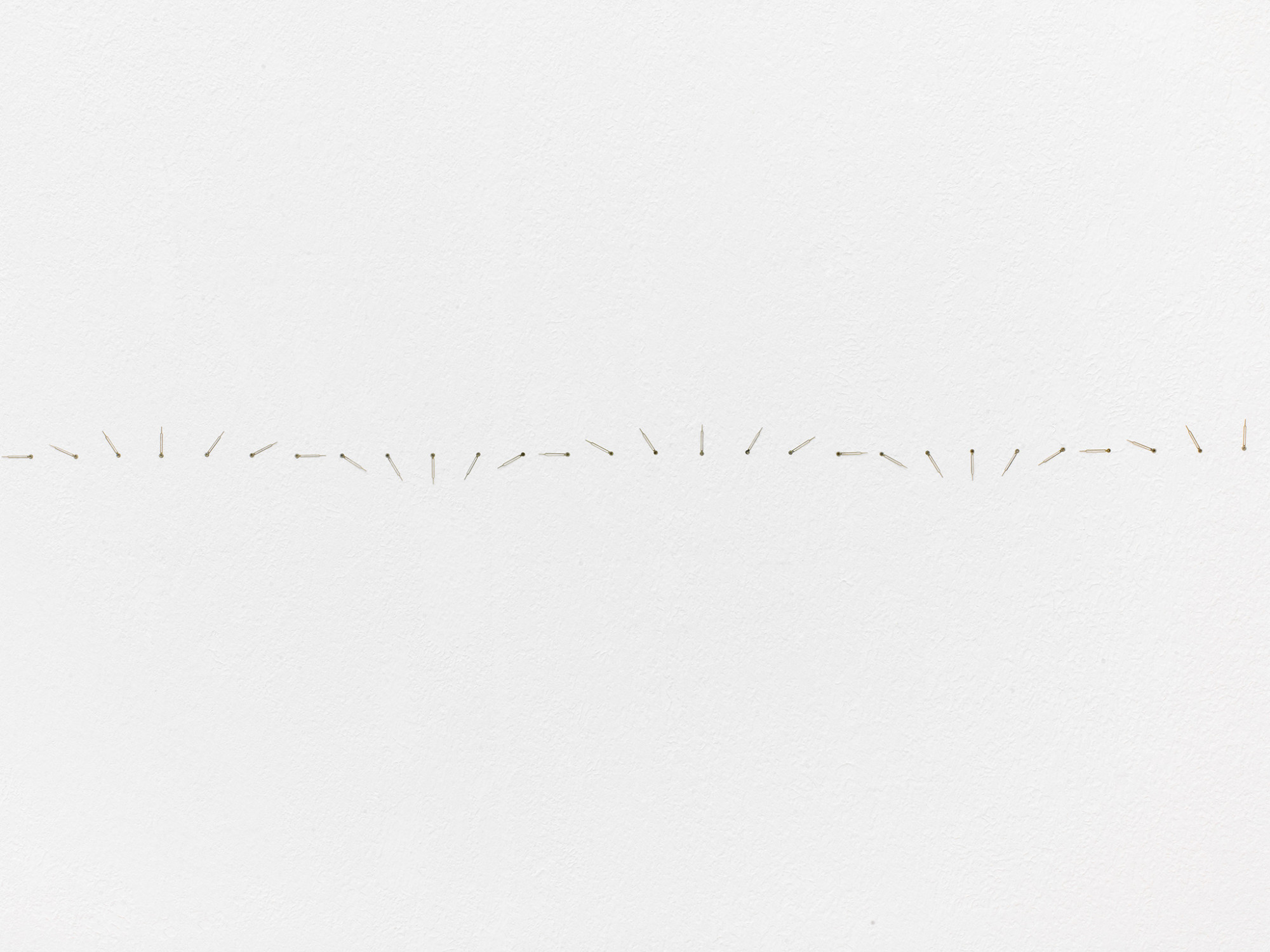
60 Tage und 1 Stunde, 2015
brass ( pocket watch hands )
dimensions variable, unique
For the site-specific work 60 Tage und 1 Stunde, the artist integrates the bare walls of the room into the work and arranges the clock hands, which have been removed from the clock face, at eye level along the wall. When the visitor walks by, countless individual hands seem to show time moving forward or backward, clockwise or counterclockwise. A distance is measured in hours instead of cm, the title is derived from the number of hours.